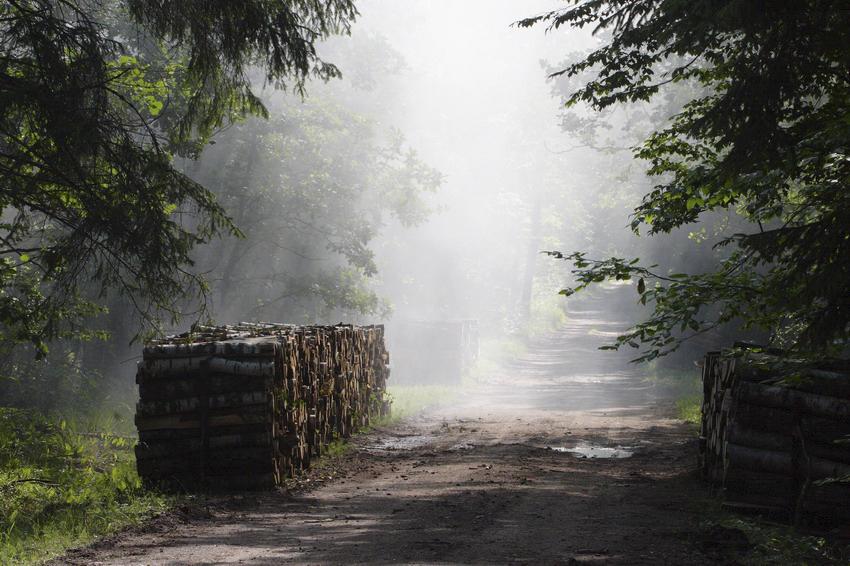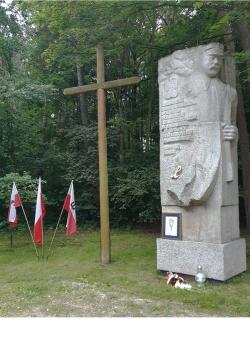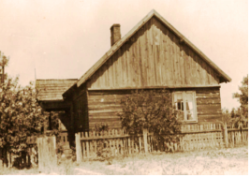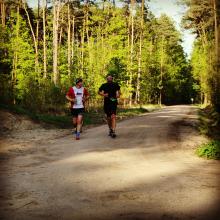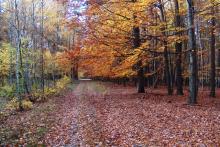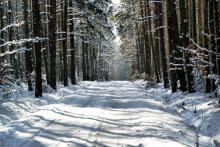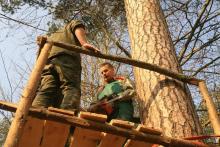 Asset Publisher
Asset Publisher
The State Forests National Forest Holding
The State Forests National Forest Holding is the largest organisation in the European Union managing forests, which belong to the State Treasury and celebrating its 90 anniversary this year.
Presently, we manage the area of one third of Poland's territory. Not long after the end of the Second World War, there was only 21 % of the area. Every year we plant 500 million of new trees, as we want Polish forests grow all the time.
Every year Polish foresters plant 500 million of trees.
85 % of nature reserves in Poland are located within the State Forests. 40 % of the forests managed by General Directorate of the State Forests are protected within the framework of European network Natura 2000. We fight against many threats: natural disasters, plaques of insects, trees' diseases, fires, pollutions, as well as poaching and vandalism.
We take care the forestry supplying the market with timber, as ecological and universal material, to be carried on in accordance with rules of balanced development (photography P.Fabjański).
One of our major tasks is making forests accessible to the society. We invite you to take advantage of these beautifully located within the forest wilderness holiday resorts, forester's lodges or guest rooms. That is for you, we create thousand kilometres of hiking trails, cycling paths or camping sites. All the above mentioned, you can find in service www.czaswlas.pl.
We also take care the forestry supplying the market with timber, as ecological and universal material, to be carried on in accordance with rules of balanced development. We obtain over 30 million of cubic meters of wood annually, twice as much as at the beginning of the nineties of the XX century.
Despite of this, the average of wood abundance per hectare of our forests is one fourth bigger than 20 years ago and 40% bigger than the average of European Union currently amounts.
In Poland in sectors connected with the forestry, there work about 375 thousand of people. It means that each 40 working Pole works in the forest.
In Poland in sectors connected with the forestry, there work about 375 thousand of people. It means that each 40 working Pole works in the forest. The sector of wood processing works out approximately 8 % of our GDP (Gross Domestic Product). Among others, thanks to the timber from the State Forests Poland is the 10 largest producer of furniture in the world, and the 4 largest furniture exporter.
The State Forests employ 25 thousand people. That way we are the 9 biggest employer in Poland. Among the largest companies in our country it takes 22 place in respect of its incomes and 11 place in respect of its profits. The value of assets, we manage, reaches 300 million zl. If we add social values, it will be worth one billion zlotych. We do not use money from the budget, but we earn money on our own to support the business. In spite of the financial crisis, since 2002, we continuously note down profits. Moreover, we pay taxes amounting 1,3 billion zl annually.
87 % of Poles think, the foresters are competent. We willingly share our knowledge of Polish forests, of their history and of nature values with the others. We publish books, periodicals, brochures; we also administer the website www.lasy.gov.pl . For children, the youth and teachers, we prepared internet service "E-lynx' Lynx Forest" (www.erys.pl). Our staff has supported schools in field of nature education for years. We also organise many actions to let people broaden their knowledge about forest, nature and ecology.
 Asset Publisher
Asset Publisher
ślady powstańców warszawskich w lasach spalskich
ślady powstańców warszawskich w lasach spalskich
1 sierpnia 2020r., w 76 rocznicę wybuchu Powstania Warszawskiego przywołujemy trzy wspomnienia:
- Strzelca Jana Antoniego Jaśka, pseudonim „Bet”, syna Walentyny z Marcinkiewiczów i Antoniego urodzonego 22 czerwca 1922 r. w Poznaniu. W 1942 r. ojciec zabiera go z Warszawy skąd przenoszą się do Kosowa Lackiego. Ojciec, jako leśnik, zostaje zatrudniony w majątku leśnym księcia Erika von Kurzatowskiego. Jan zostaje zatrudniony jako goniec w Nadleśnictwie Łochów. Mając możliwość swobodnego przemieszczania się oraz znajomość języka niemieckiego staje się łącznikiem konspiracji AK. W lipcu 1944 r. wraz z ojcem przenosi się do Warszawy. Zgłasza się do 24 kompani WSOP, stacjonującej na ulicy Kruczej. Tam zostaje zaprzysiężony i wcielony do 4 plutonu 24 kompanii w oddziałach kpt. „Kryski”. Jako strzelec, amunicyjny elkaemu przechodzi szlak bojowy od Śródmieścia do Czerniakowa. Ginie około 20 września 1944 r., broniąc terenu przeprawowego przy statku „Bajka”, nad Wisłą. Ciała nie odnaleziono. Jego portret został odnaleziony, odnowiony i zakonserwowany w Domu Pamięci Męczeństwa Leśników i Drzewiarzy Polskich im. Adama Loreta w Spale.
- Kobiet z Powstania - W małym domku w Królowej Woli, do którego zmuszona była przenieść się Rodzina leśniczego Antoniego Gabrysiewicza po jego aresztowaniu, po Powstaniu znalazło schronienie 8 kobiet i troje dzieci. Rodziny Kubiaków, Gomólińskich, Piwkowskich i Filewiczów, Sienkanów i Osikowskich. Poprzez obóz przejściowy dla warszawiaków, wypędzonych z miasta, Dulag 121 w Pruszkowie, dotarły tu pieszo. Razem z gospodyniami domu przetrwały głód, choroby i zagrożenia ze strony Niemców, Rosjan, Kozaków.
- Od Puszczy Nalibockiej przez Puszczę Kampinoską do Puszczy Spalskiej wędrowali i walczyli Partyzanci trzech puszcz. Zgrupowanie Stołpecko - Nalibockie pokonując trudną drogę w walce, od Puszczy Nalibockiej do Warszawy, tuż przed Powstaniem Warszawskim dotarło do Puszczy Kampinoskiej. 2 sierpnia zgrupowanie zaatakowało lotnisko na Bielanach. Z 2 na 3 września zaatakowało i rozgromiło batalion znienawidzonej formacji SS-RONA.Po ostatnim boju pod Jaktorowem resztki zgrupowania dotarły do trzeciej Puszczy, lasów opoczyńskich i spalskich. Major Adolf Pilch ps. „Góra – Dolina”, były dowódca zgrupowania, stanął na czele konnego oddziału, walczył na dawnych szlakach „Hubala” do stycznia 1945r.
tekst: A. Choromański


 fot. Paweł Fabijański
fot. Paweł Fabijański
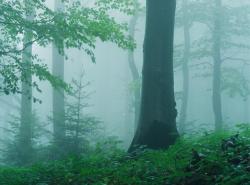 fot. Paweł Fabijański
fot. Paweł Fabijański
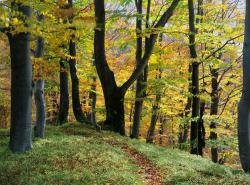 fot. Paweł Fabijański
fot. Paweł Fabijański
